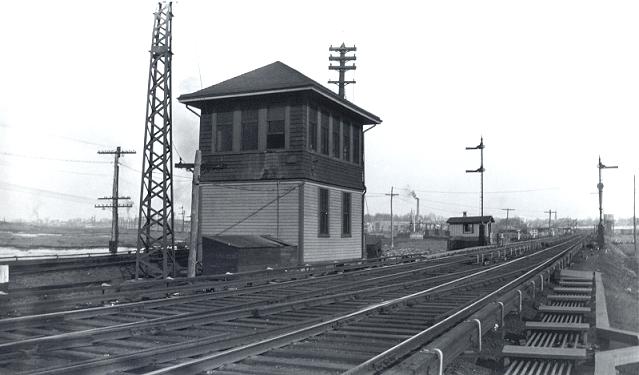by 7 Train
I am currently reading 'The Great Gatsby' in spare time in high school. I have several comments about the book:
As you many know the "Valley of Ashes" is the present-day Flushing Meadows-Corona Park. The author is referring to the Flushing River. There is no evidence today of a drawbridge on the Port Washinton branch at this point. If so, when was it removed?
Was there ever an actual timetable for the Port Washington branch published on that date?
When was the PW branch electrified? Also what type of cars were running on the line when the book was written in 1924-25?
(All pages refer to the 1995 authorized complete edition.)
About half way between West Egg and New York the motor road hastily joins the railroad and runs beside it for a quarter of a mile, so as to shrink away from a certain desolate area of land. This is a valley of ashes—a fantastic farm where ashes grow like wheat into ridges and hills and grotesque gardens; where ashes take the forms of houses and chimneys and rising smoke and, finally, with a transcendent effort, of men who move dimly and already crumbling through the powdery air. Occasionally a line of gray cars crawls along an invisible track, gives out a ghastly creak, and comes to rest, and immediately the ash-gray men swarm up with leaden spades and stir up an impenetrable cloud, which screens their obscure operations from your sight.
The valley of ashes is bounded on one side by a small foul river, and, when the drawbridge is up to let barges through, the passengers on waiting trains can stare at the dismal scene for as long as half an hour.(Chapter 2, pgs. 27-28)
As you many know the "Valley of Ashes" is the present-day Flushing Meadows-Corona Park. The author is referring to the Flushing River. There is no evidence today of a drawbridge on the Port Washinton branch at this point. If so, when was it removed?
Once I wrote down on the empty spaces of a time-table the names of those who came to Gatsby’s house that summer. It is an old time-table now, disintegrating at its folds, and headed “This schedule in effect July 5th, 1922.”(Chapter 4, pg. 65)
Was there ever an actual timetable for the Port Washington branch published on that date?
All the lights were going on in West Egg now; the electric trains, men-carrying, were plunging home through the rain from New York.(Chapter 5, pg. 101)
When was the PW branch electrified? Also what type of cars were running on the line when the book was written in 1924-25?
(All pages refer to the 1995 authorized complete edition.)
